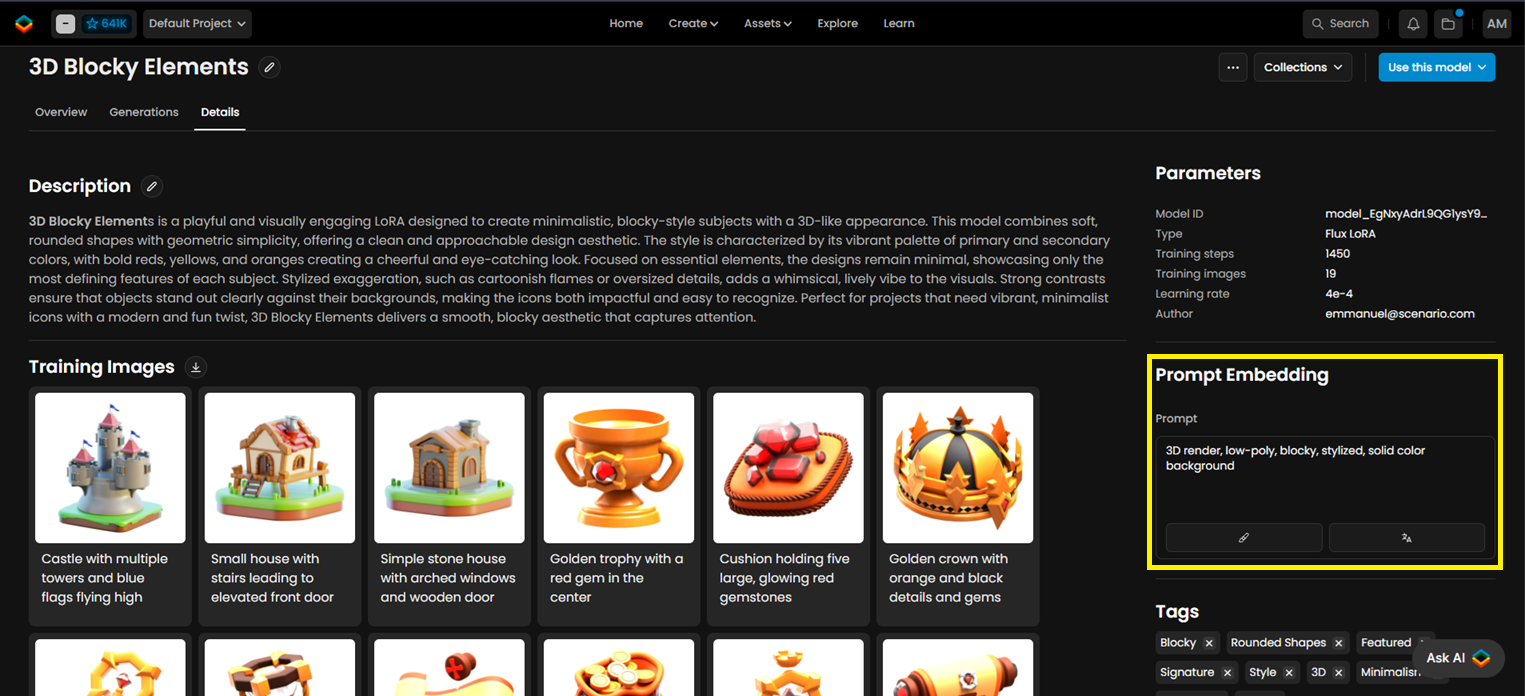Prompt Embedding is a method that automatically adds a consistent set of extra words (tokens) to input prompts, helping generate more precise visuals through additional guidance in the prompt. There are two types of prompt embedding available on Scenario:
Prompt Embedding: Adds helpful context or instructions to guide the AI toward the desired output, such as keywords for quality or style (e.g., “3D cartoon style, vibrant colors”).
Negative Prompt Embedding: Specifies elements to avoid or exclude in the output (e.g., “blurry, realistic”). This feature is available only for Stable Diffusion models only.

Why Use Prompt Embeddings?
Configuring prompt embedding enhances the accuracy of your custom AI models. It works behind the scenes, ensuring more consistent results without requiring users to manually enter extra information each time in the prompt. It’s a time-saver and a simplifier: you set it up once, and it works automatically
Configure Prompt Embeddings in a few simple Steps
Navigate to the “Details” tab on a model page to access the model configuration. You’ll see options for prompt embedding to the right of the interface.
Enter the tokens you want included in every prompt, such as “3D cartoon style, vibrant colors” for a cartoon model for instance. These keywords guide the AI to produce consistent, high-quality visuals without appearing in the user’s prompt field.
If using a Stable Diffusion model (like SDXL), you can also configure negative prompt embedding by entering elements to avoid, like “blurry, realistic, low-res, distorted”. This helps exclude unwanted details, ensuring cleaner, consistent results.
Click "Save" to apply the changes. The embedded prompts are now automatically added to every user prompt during generation, without requiring manual input each time.
Once configured, prompt embedding remains invisible to users unless they access the model settings again.
Was this helpful?